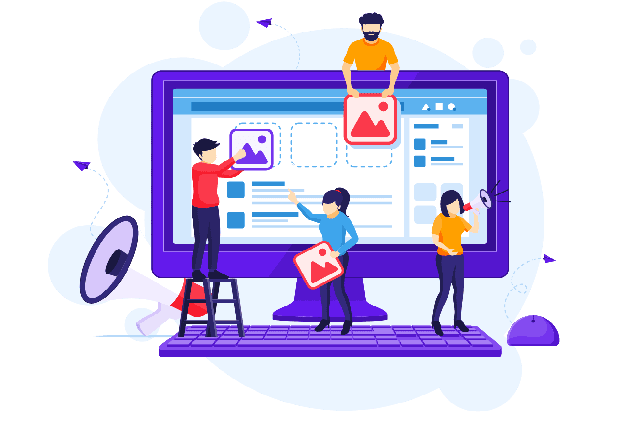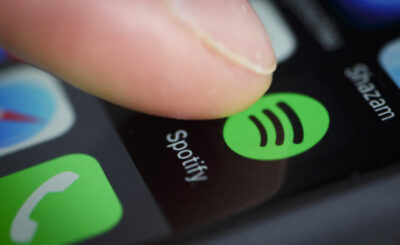Product Events Marketing Automation is rapidly reshaping how modern businesses engage with their users. In today’s digital-first landscape, where personalized and timely communication is critical, automating marketing actions by leveraging product usage data is now a competitive need rather than a luxury. Whether you operate a SaaS platform, an e-commerce website, or a mobile app, using behavioral triggers to tailor the customer experience helps improve retention, boost revenue, and deliver measurable ROI. But what is product events marketing automation, and why does it matter more than ever!
Table of Contents:
Understanding its Concept

Exploring what is Product Events Marketing Automation?
Events for Products Using automation tools and software to monitor, evaluate, and react to particular user activities (also known as “events”) within a product or application is known as marketing automation. These events might include things like a user signing up, completing a tutorial, abandoning a cart, upgrading their subscription, or clicking a particular feature.
Instead of sending generalized campaigns, this approach enables marketers to create personalized, timely messages based on real-time behaviors. These behaviors — or “product events” — serve as triggers to deliver relevant marketing actions, whether that’s an email, push notification, in-app message, or even a customer service intervention.
In essence, it’s about meeting users where they are in their journey and guiding them forward, automatically.
A Brief History of Product Events Marketing Automation
Marketing automation has evolved significantly over the past two decades. Initially, it focused on email campaigns and lead nurturing based on static CRM data. Over time, the rise of behavioral analytics and customer data platforms (CDPs) gave marketers access to richer, real-time insights into how users engage with digital products.
Today, Product Events Marketing Automation is the next step in this evolution — blending the strengths of behavioral data, machine learning, and automation to drive contextual and continuous engagement across the customer lifecycle.
Why Product Events Matter
User events are signals. Every time someone interacts with your product, they’re communicating intent, interest, or friction. By capturing and acting on these signals, businesses can:
- Reduce churn
- Increase feature adoption
- Onboard users more effectively
- Recover lost revenue (e.g., from abandoned carts)
- Upsell and cross-sell at the right moments
Precision marketing—the correct message, to the right user, at the right time—is made possible by these insights, which eliminate the need for guessing or manual segmentation.
Importance of Product Events Marketing Automation
For its implementation Product Events Marketing Automation effectively, it’s crucial to understand its core components:
1. Event Tracking of product events marketing automation
You’ll need analytics tools (e.g., Mixpanel, Amplitude, Segment) that capture specific user actions — such as “clicked_button,” “added_to_cart,” or “completed_profile.”
2. Data Integration
These technologies need to work with your email platforms, marketing automation software (like HubSpot, Intercom, and Customer.io), and customer relationship management (CRM) systems.
3. Automation Workflows
Using these data points, you create rules or workflows that trigger marketing actions. For example, if a user hasn’t completed onboarding within 3 days, send them a reminder email or in-app tutorial.
4. Personalization
Automated messages can include personalized content based on user behavior, preferences, and attributes. This enhances relevance and drives engagement.
5. Analytics & Optimization
To enhance and optimize automation flows, you must continuously track performance metrics like open rates, conversions, and click-through rates.
Guide on Product Events Marketing Automation
Here’s a step-by-step guide to help businesses plan and implement it effectively:
Step 1: Define Your Goals for product events marketing automation
Are you trying to improve onboarding? Drive more upgrades? Reduce churn? Start with clear, measurable objectives.
Step 2: Map the User Journey
Break down the key stages of your product experience — from sign-up to engagement to conversion. Identify the events that occur at each stage.
Step 3: Choose the Right Tools for product events marketing automation
Select analytics and marketing platforms that can handle event-based triggers and integrate seamlessly with your existing stack.
Step 4: Segment Your Audience
While automation reduces manual segmentation, it’s still important to group users based on meaningful behaviors — such as first-time users, frequent users, or those at risk of churn.
Step 5: Build Automation Workflows
Set up triggers based on key events. For example:
- If a user completes a tutorial → Send a congratulatory message and suggest the next action.
- If a user doesn’t return after 7 days → Send a re-engagement email with tips or offers.
Step 6: Test and Iterate
Always A/B test different messages, timings, and channels. Use analytics to identify what’s working and refine accordingly.
Benefits of Marketing Automation Through Product Events

Understanding the Benefits of Marketing Automation in the context of product events can highlight why this approach is transformative for businesses:
1. Hyper-Personalization
Delivering messages based on user behavior allows for highly relevant and timely communication. This increases open rates, click-throughs, and conversions.
2. Increased Retention
By guiding users through key milestones and re-engaging them when they drop off, businesses can significantly reduce churn and improve lifetime value (LTV).
3. Enhanced Customer Experience
Automated flows help users discover features, solve problems, and achieve success faster — creating a smoother, more intuitive product experience.
4. Operational Efficiency
Marketing teams save countless hours by automating repetitive tasks, enabling them to focus on strategy and creativity.
5. Real-Time Decision Making
Instant feedback from event-triggered campaigns allows marketers to act quickly and make data-driven decisions.
Real-World Examples of product events marketing automation
Example 1: SaaS Onboarding
A project management SaaS platform sets up automation that sends an in-app message when a user creates their first project, congratulating them and linking to a guide for advanced features. If the user doesn’t add a team member within 3 days, an email follows up with a tutorial.
Example 2: E-Commerce Cart Abandonment
Event triggers are used by e-commerce sites to detect when a user adds an item to their cart but does not finish the checkout process. An email informing them of the goods and a temporary discount offer is delivered within two hours.
Example 3: Mobile App Engagement
A fitness app notices when users miss 3 days of logging workouts. It automatically sends a push notification encouraging them to resume, along with motivational tips.
These examples illustrate how event-driven automation can drive business results with minimal manual effort.
Common Challenges and How to Overcome Them
While Product Events Marketing Automation offers many benefits, it’s not without challenges:
Data Overload
With hundreds of potential events, it’s easy to get lost in too much data. Focus on high-impact events tied to your business goals.
Integration Issues
Ensure all your tools communicate effectively. Investing in a customer data platform (CDP) can streamline integration.
Message Fatigue
Avoid overwhelming users with too many automated messages. Use frequency capping and prioritize quality over quantity.
Privacy Concerns
Respect user privacy at all times and follow data protection laws (such as the CCPA and GDPR). Make it clear what information you gather and how you plan to use it.
Future Trends in Product Events Marketing Automation
The field is evolving rapidly. Here are some trends shaping the future:
1. AI-Powered product events marketing automation
Artificial intelligence is being used to predict user behavior and optimize message timing and content dynamically.
2. Omnichannel Experiences
Automation is expanding beyond email to include push notifications, SMS, chatbots, and social media — all orchestrated around user events.
3. No-Code Platforms
More tools are becoming accessible to non-technical users, enabling marketers to set up complex workflows without engineering help.
4. Predictive Analytics
Tools are beginning to forecast user actions — such as likely churn or conversion — allowing marketers to act proactively.
How to Get Started for product events marketing automation
Ready to dive in? Here’s how to take your first steps:
- Audit your current user journey and identify key touchpoints.
- Select a tool that offers event tracking and marketing automation.
- Start with one or two automation workflows (e.g., onboarding or re-engagement).
- Measure results and expand over time.
Remember, the key to success is continuous learning — both from your users and from your data.
Conclusion
In a world where users expect personalized, seamless experiences, Product Events Marketing Automation is not just a luxury — it’s a necessity. By leveraging user behavior data to trigger timely, relevant interactions, businesses can enhance engagement, improve retention, and drive growth more effectively than ever before.
If you’ve ever asked, what is product events marketing automation, or sought a guide for it, this comprehensive overview should provide a solid foundation to understand and implement it. The Benefits of Marketing Automation in this context are clear: better user experiences, improved efficiency, and scalable growth.







